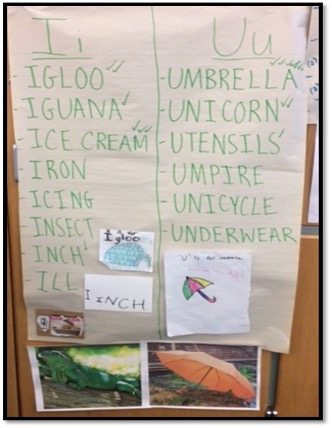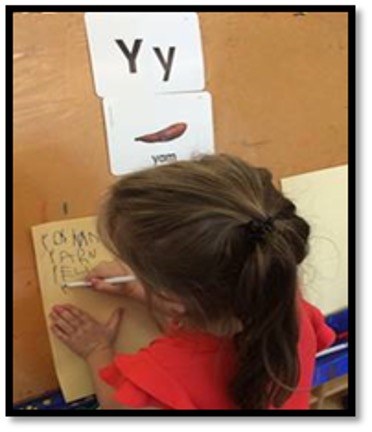Introduction: Fostering Word Consciousness
Fostering word consciousness builds awareness of words and their meaning (Graves & Watts-Taffe, 2008). When children are conscious of words around them, they gain knowledge to communicate effectively and learn about new concepts. Children are naturally curious about words and motivated to say and write them. Invite children to be curious about words and build learning through high-interest texts, children’s interests, and studies of Big Idea themes and topics.
What does it mean to know a word?
Young children, especially English Language Learners need to foster a deep understanding of words through play, talk, stories, visual cues, and text. This includes developing memory for a word – the ability to integrate the word into daily use and retrieve it when needed and understand that words have multiple meanings. Children may have little or some knowledge of certain words but need deep understanding to use words in context.
Code-Based Competencies such as sound/symbol connections (sound and letter recognition), eventual ability to understand spelling patterns, and development of efficient reading skills are also important and are addressed in the Phonological and Phonemic Awareness Guide. However, these skills do not automatically lead to understanding.
Meaning-Based Competencies such as understanding word meaning in context or making meaning using background knowledge require ongoing experiences with words and the contexts in which they are used. Words represent concepts and strong meaning-based instruction supports children’s overall knowledge base.
As you think about the Big Ideas you will explore with children, consider the “academic” vocabulary you will pull out to increase children’s depth of knowledge. For example, when studying how things grow and change we want to go beyond “plant” and “flower” to “soil”, “petals,” and “germinate.” Study a small set of words deeply to build children’s capacity to understand and use new words.
Resources:
Graves, M.F. & Watts-Taffe, S. (2008) For the love of words: Fostering word consciousness in young Readers. Reading Teacher, v62 n3, pp. 185-193, November.
Lesaux, N.K. & Harris, J.R. (2015). Cultivating knowledge, building language: Literacy instruction for English learners in elementary school. Portsmouth, NH: Heinemann.
Saul and Dieckman 2005; Shanahan et al. 2010)
The Language of School
Entering preschool is often children’s first schooling experience. For English Learners (ELs), it may also be their first experience in a predominantly English-speaking environment. We cannot assume that entering children will know and understand the basic language and concepts involved in “doing school.” As we establish and teach classroom routines, we must think carefully about explicitly teaching, practicing, reviewing, and reinforcing school language. Some key terms include:
- Walking in a line
- Sitting on the edge of the rug
- Raising a hand
- Making a choice
- Expressing personal needs (I need . . ., I want. . .)
Environmental Print: Words All Around Us



Children are surrounded by environmental print. They begin to ‘read’ this print at an early age through repetitive exposure and use it to construct knowledge and make sense of their world. Environmental print supports the development of a memory for words. It also inspires children to be writers and helps them produce readable text. To support children’s engagement with environmental print, create a print-rich environment.
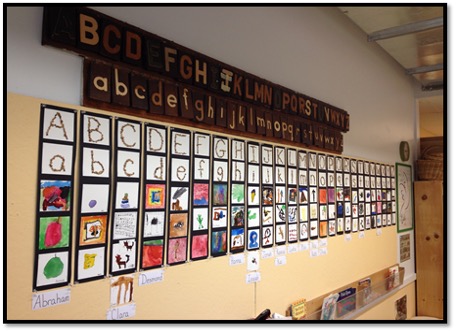
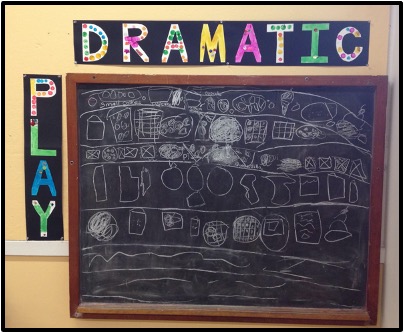
This does not mean charts, posters, and labels on every surface of your classroom. Instead, carefully curate print that aligns with the current curriculum and is both teacher and child-generated.
In your classroom:
- Encourage children to make their own word walls, classroom alphabet, and signs for areas of the classroom.
- Display children’s work (drawing and writing) alongside photos of them engaged in the process.
- Create vocabulary rings and/or a poster of local businesses that children frequent.
- Include signs, maps and blueprints in the block area and attach local business icons to the blocks.
- Place cookbooks and menus in dramatic play.
- Provide clipboards, index cards, paper, pencils and tape throughout the classroom so children can draw, write and make signs and labels.
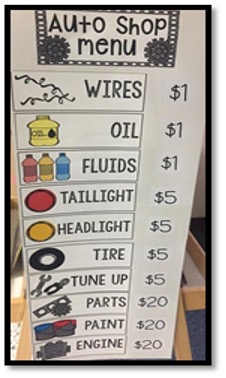
Bringing Words to Life
Words come to life when children experience the target vocabulary and content in multiple ways. Your units of study (Big Idea) are the jumping-off point and foundation for the vocabulary you will highlight. Providing word cards and inviting children to label real-world objects and displays deepens an understanding of new words.
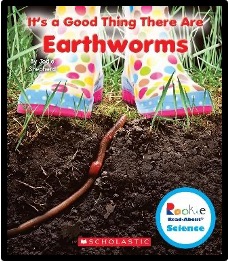
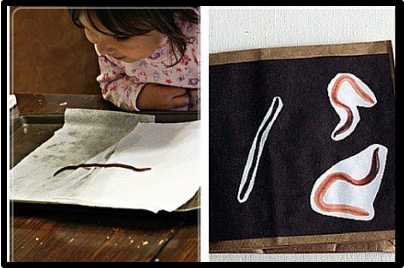
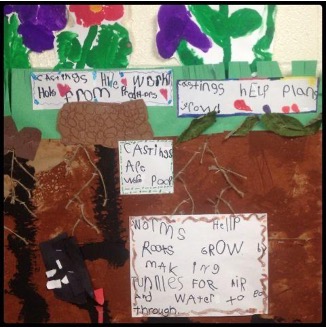
Many teachers engage in Letter(s) of the Week to introduce the letter names and sounds associated with words – some familiar and some new. Presenting letters and words in isolation is an important code-based practice but may offer young children little meaning. Connect the letter of the week to meaningful vocabulary from your Big Idea. To make this a more authentic meaning-based experience, encourage children to add to the letter of the week word wall. Children can also draw or collage a picture and write the word to display alongside the teacher’s print. Vocabulary needs context and an anchor.
